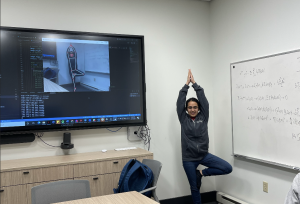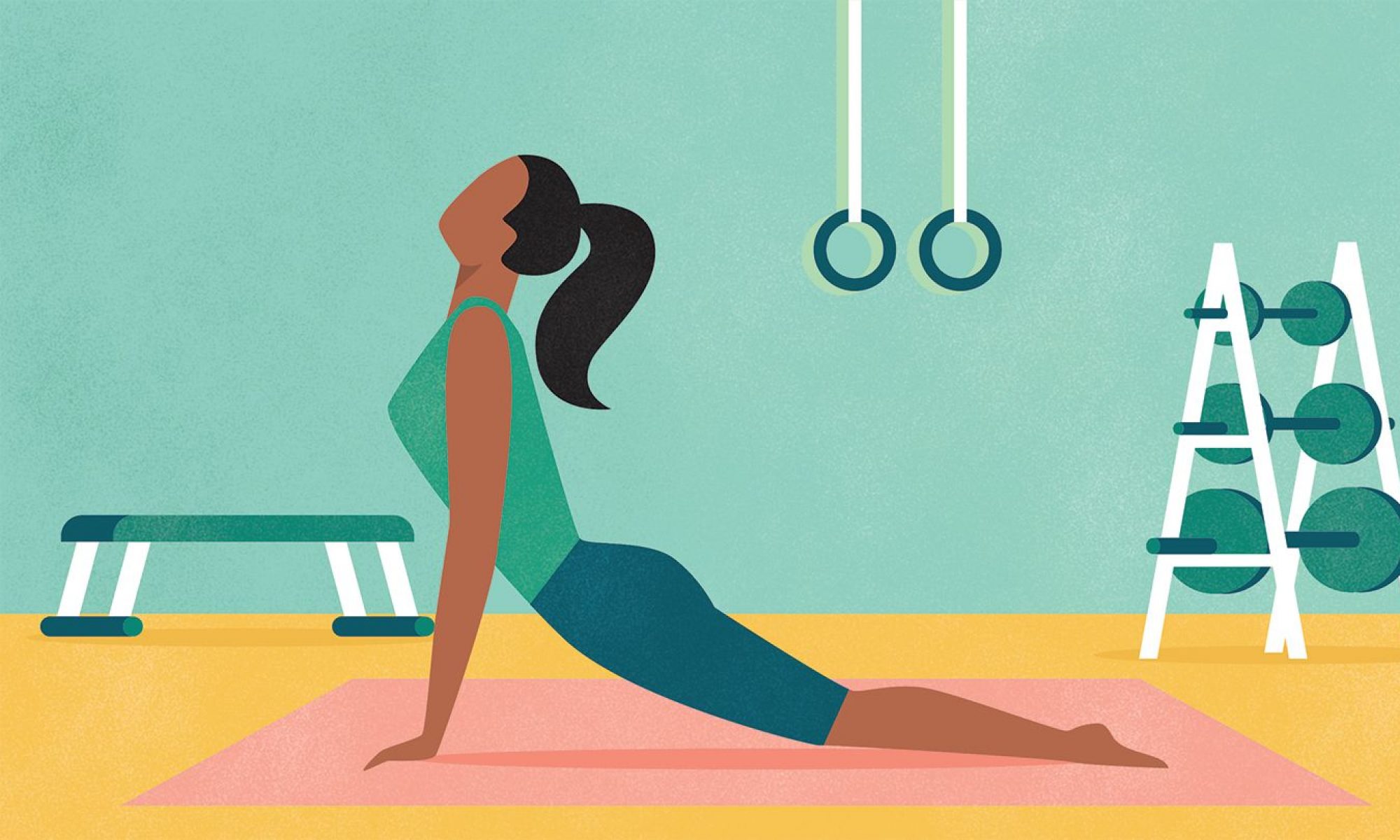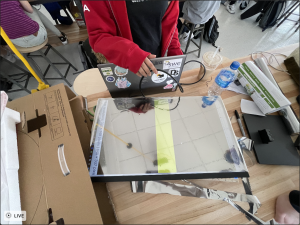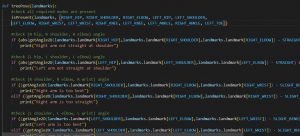Current Progress:
- We finished writing all the code for the Pose Correction Algorithm and finished testing all but one pose
- Our monitors and mirror sheet arrived this week so we created a rough prototype and experimented with different brightness levels of the monitor and displaying different colors
- We determined the mirror sheet was not as sufficient to provide both the mirror display and let the LCD screen overlay show as the visibility of the mirror aspect was very poor at a distance of 3-4 ft back
- As a proof-of-concept, however, the mirror performed well as we could observe both our reflection as well as the LCD display
- We submitted an order for an acrylic mirror sheet which is slightly more expensive but has greater potential to display both images with greater clarity
- We tested the poses on subjects with different heights (lower limit of ~5′ and upper limit of 6’+), to gauge whether the algorithm would still pinpoint the 33 landmarks and display the correct print statements from the Pose Correction algorithm. From our testing of various poses with the array of heights, we determine the algorithm was robust enough to accommodate all heights.

Timeline:
In regards to the timeline, we still have yet to finish our hardware mirror construction which we estimated would be complete before spring break, however we are relatively finished with the Pose Detection/Correction component and are ready to move on to the second half of the software which includes the Mirror UI.
Next Steps:
- The hardware assembly is still incomplete as we need to attach the 2 monitors together, create the wooden frame, and attach the newly ordered acrylic mirror to the screen
- We plan to start working on the error component of the Mirror UI and figuring out whether its possible to overlay a yellow highlighted figure onto a person’s reflection





